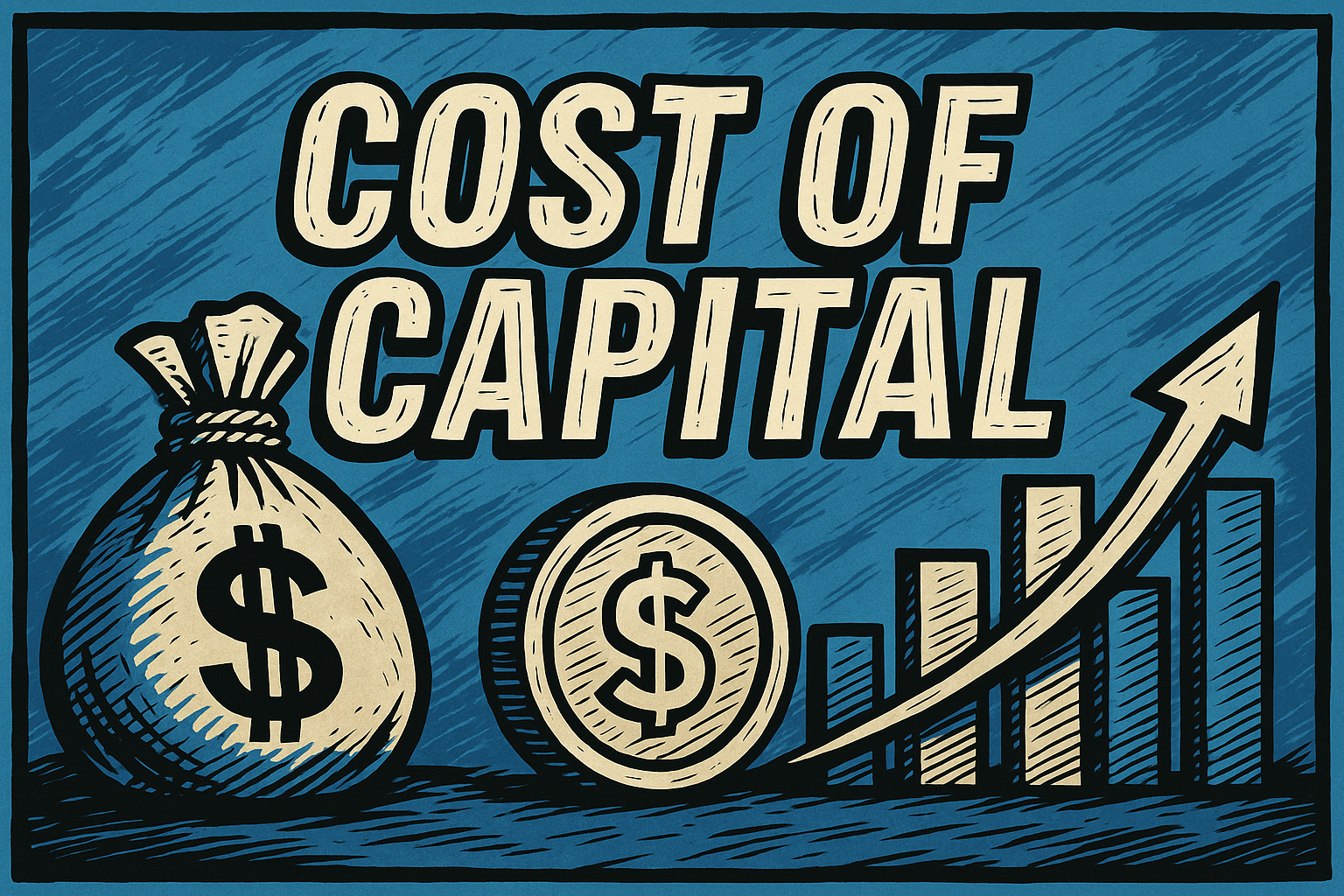Cost of Capital
“Every Dollar’s Got a Price”

Understanding Cost of Capital: What Every Business Owner Needs to Know
Cost of capital is one of the most important—but often misunderstood—concepts in business finance. Whether you’re expanding your operations, launching a new product, or deciding between funding options, understanding your cost of capital helps you make smarter, more profitable decisions.
What Is Cost of Capital?
At its core, cost of capital is the price you pay to use someone else’s money to grow your business.
It reflects the minimum return your business must generate on an investment or project to justify the cost of financing it—whether that financing comes from debt (loans) or equity (investor capital).
✅ Think of it this way: If your project doesn’t earn at least the cost of capital, it’s destroying value, not creating it.
Components of Cost of Capital
There are two primary sources of capital for most businesses:
| Source | Description |
|---|---|
| Debt | Borrowed money (e.g., loans, bonds, credit lines) that must be repaid with interest. |
| Equity | Owner’s or investor’s money that buys a share of your business and future profits. |
Each comes with its own cost:
💵 Cost of Debt
Typically the interest rate (and possibly fees) on loans or bonds or other credit facilities.
Tax-deductible, so the after-tax cost of debt is used in calculations.
Generally lower than equity, but increases risk with mandatory repayment.
📈 Cost of Equity
The expected return an investor demands for the risk of investing.
Not fixed like interest—varies based on market conditions and your company’s risk profile.
No tax benefit, and often more expensive than debt.
The Formula: Weighted Average Cost of Capital (WACC)
Most companies use a blend of debt and equity. The WACC combines the two, based on how your company is financed.
WACC = (% Debt × Cost of Debt) + (% Equity × Cost of Equity)
This is your company’s blended cost of capital—and it serves as a hurdle rate for investment decisions.

Why Business Owners Should Care
Understanding your cost of capital helps you:
✅ Make Smarter Investment Decisions
Only greenlight projects or acquisitions that generate returns higher than your cost of capital—or you’ll be eroding business value.
✅ Choose the Right Financing Mix
Compare the costs and risks of debt vs. equity. Lower cost isn’t always better if it increases risk or limits flexibility.
✅ Demonstrate Financial Discipline
Investors and lenders will take you more seriously when you understand and manage your cost of capital.
Example 1: Expanding a Manufacturing Facility
Scenario:
A growing manufacturer is considering a $1 million expansion to increase production capacity.
The projected return from the expansion is 10% annually.
Financing Mix:
70% debt at 7% interest (after-tax cost = 5%)
30% equity, with investors expecting a 14% return
WACC Calculation:
WACC = (70% × 5%) + (30% × 14%)
WACC = 3.5% + 4.2% = 7.7%
Decision Insight:
Since the expansion is projected to earn 10%, and the cost of capital is 7.7%, the project would likely create value and be financially justifiable.
Example 2: Opening a New Retail Location
Scenario:
A multi-store retailer is considering opening a new location requiring a $500,000 investment. The expected annual return is 7% based on projected foot traffic and average ticket size.
Financing Mix:
50% bank loan at 9% interest (after-tax cost = 6.5%)
50% equity with a required return of 11%
WACC Calculation:
WACC = (50% × 6.5%) + (50% × 11%)
WACC = 3.25% + 5.5% = 8.75%
Decision Insight:
Since the expected return is 7% and the cost of capital is 8.75%, the project would likely destroy value—despite appearing profitable on the surface.

Final Takeaway
Cost of capital isn’t just a number for your accountant—it’s a strategic tool.
Knowing it helps you:
Avoid bad investments
Fund your business wisely
Build long-term value
Whether you’re managing growth, raising funds, or just running lean—you need to know how much your money really costs.

